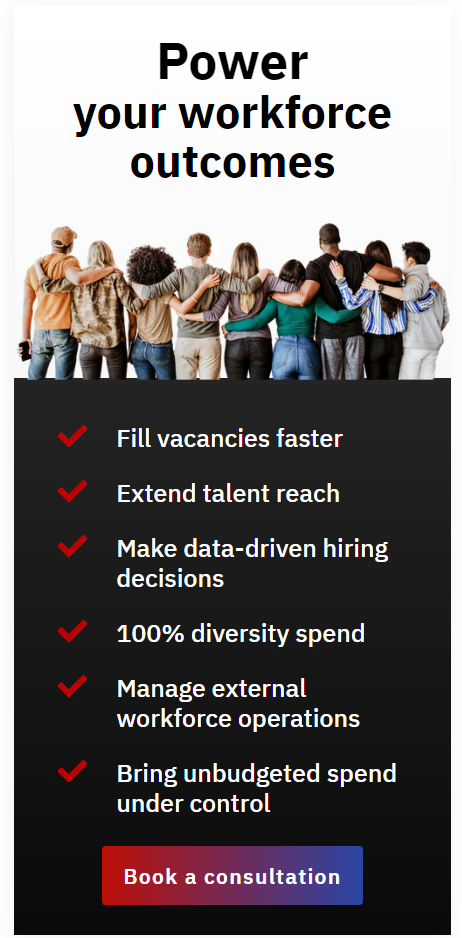Beyond the corporate spin, we ask the question—has workforce diversity become too difficult for businesses to enact?
An experiment
For this article, we researched the top 50 organizations of the Fortune 500 to analyze whether they are managing to turn their diversity ambitions into actions—and, if so, how. To learn more about their diversity initiatives and how important these policies are to each organization, we searched the term ‘diversity and inclusion’ on their websites and the results of that search were interesting.
Rather that criticize any particular organization for their efforts, this article aims to surface the challenges of creating a truly diverse workforce culture. And, if they find it difficult, then, is it likely to be difficult for others?
The Results
Diversity, as a corporate credential
We wanted to see what diversity content can be found on corporate websites and how old the content was. For instance, were there many references or was it just a single page? We figured one way to do this was to research the top companies—those that are usually the first to adopt initiatives that drive Corporate Social Responsibility (CSR) owing to their size, wealth and brand value.
From our secondary research, we found less than 1 in 5 (16%) of companies in the top 50 of the Fortune 500 has a page for ‘Diversity & Inclusion.’
For 1 in 5 (16%) of companies surveyed, support for diversity and inclusion programs came in the form of a single page, commonly with three or four paragraphs speaking about the importance of diversity, without demonstrating what changes they are making in their company. On the other hand, 26% of businesses projected the importance of diversity, describing what diversity means to them, how they are addressing it, and most importantly, their performance statistics.
We take encouragement from these results. While the headline statistics are not where any proponent of D&I would want it to be, the ‘feet on the ground’ feedback we’re getting from our team is that companies are working hard to make profound changes to the way diverse talent is found, embraced and supported—sometimes without the sponsorship or funds they really need. It could be this stark ‘public’ face of the state of D&I in business, is simply a case of marketing and communications teams catching up with what’s happening behind closed doors and struggling to find the appropriate words to put a public face to their story.
Engaging in the discussion
We live in an era where people want their employers to state their position on societal issues. They want the businesses that create their wealth to do it in the right way. For that reason, one might expect companies to have a more proactive voice on workplace diversity. We found that while most of the researched businesses post articles weekly on topics important to them, few had a category for diversity and inclusion. Encouragingly, searching for the word ‘diversity’ in their search bar brought up a significant volume of results. This suggests that companies are increasingly willing to talk about D&I on a public forum.
Statistics don’t lie, or do they?
While the stories and commitments signpost a positive outlook, there remains a disparity between diversity goals and the workforce construct statistics. In one business had 73.7% male employees. Another did not report on their workforce statistics, which is suggestive of a non-diverse workforce. We also discovered one well-known brand had a workforce mainly consisted of White and Asian ethnic backgrounds, with only 15.2% of employees with other ethnic backgrounds. However, this can’t be said of all the Fortune 500 companies included in our research. One business is made up of 72% women employees, and 39% were people of color. These are more encouraging figures and demonstrate that achieving these levels of diversity is not impossible.
We would argue that it’s good that businesses are being ever more transparent with their diversity statistics, even when the statistics are on the south side of where they need to be. But, while it’s easy to launch a webpage espousing the commitments of executive teams to diversity and inclusion programs, the active rebalancing of the workforce appears to be the longtail challenge businesses are struggling with.

Why is a diverse workforce proving so hard to get right?
From the results of our research into the state of diversity and inclusion of Fortune 500 companies, few would argue the stated ambitions of these companies are honorable. However, something is preventing a large proportion of organizations from achieving their diversity goals, intentionally or not. Women and minority groups continue to be underrepresented in the workplace. So, what’s happening? Why do organizations find it difficult to diversify their workplace? We would cite a few critical success factors:
Leadership and sponsorship
The argument goes—if a company employs diverse leaders, then the rest will follow. Irrespective of their diversity credentials, leaders need to be passionate about promoting and instilling diversity into the company to make change happen. Some 38% of executives reported that the promoter of diversity and inclusion efforts is the CEO—encouraging but not convincing. When the CEO isn’t vocally committed to achieving diversity outcomes, then the ability of subordinates to implement these goals is compromised. The simple fact is that companies struggling to achieve diversity goals may not have the correct mindset in the boardroom to appreciate what changes need to be made and set things in motion.
A lack of base data
To make improvements of any kind in business, the first step is to appreciate the baseline, and for some companies, that work hasn’t been done. It’s not easy to invest time in data crunching on operational topics when it’s difficult to directly evidence impact on the bottom line. Curating the necessary insight on diversity behaviors in a business, some would argue is the first step to taking corrective action.
Often companies who lack diversity put it down to not knowing how. They lack the knowledge to make these important changes. However, they don’t do the research themselves or hire someone to do it for them. This then prevents them from achieving diversity because if they don’t know how to diversify their business, then they are unable to do so. Additionally, if they lack knowledge on their issues in the business, they won’t have an understanding of why the diverse members of their business may be leaving them.
Lack of budget
Particularly in this post-pandemic period, companies are working hard to recover from the losses made during lockdowns and periods where productivity and output has suffered. It’s a difficult time to justify spending money on initiatives that don’t directly contribute to the bottom line.
Human Resources functions have been hugely impacted by COVID-19. Talent leaders have been hard-pressed to cope with sudden changes in workforce demand, they’ve had to get to grips with remote recruitment and changes to flexible working policies, on top of which the return to work has been hampered by the mass exodus of staff who’ve suddenly realized the grass definitely is greener on the other side.
Competition for the budget in the boardroom has never been greater. Firms are needing to find investments to rebuild their supply chain, get their sales pipelines humming again, reduce operating costs through automation, while all the time working to boost their customer experiences, personalize customer treatments, and move business online.
Bluntly, in most companies today, there isn’t enough money being earmarked for diversity initiatives, and COVID-19 hasn’t helped to release it. Unfortunately, if a business does not have the money to make these changes, then changes won’t occur.
Changing attitudes and norms of behavior
Of all the challenges diversity and inclusion program leaders face, changing long-trodden roads of attitudes and behaviors is, without doubt, the most difficult. Unconscious bias pervades in all areas of organizational cultures, built up over time before the days that D&I gained above-the-line visibility. Change begins by exposing existing bias, and then working on proactively eradicating it.
While we believe only a minority of people these days are consciously resistant to change towards workforce diversity, it can be a stubborn minority. Additionally, as a general rule, none of us likes to do things differently if it can be avoided, and this latent institutional intransigence towards diversity and inclusion is a difficult one to expose, face up to, and act on.
A way companies are tackling this issue today is to bring in third-party consultants with a passion and knowledge of both the subject and how to deal with the challenges of cultural transformation—companies like Diverse Matters, Kornferry, Talking Talent, and the E W Group.
Conclusion
Heading into our study, there were no expectations, except perhaps the hope for some positive results. It’s clear that there is still some way to go before diversity and inclusion in the workplace becomes the norm. Diversity matters but—when businesses are faced with so many other competing demands— perhaps not quite enough to make the gains we would like to see.
In recent years, societal and political movements have highlighted how much more there is to be done and, in business, how organizations have made too slow progress to achieve their diversity goals. Whilst it has encouraged organizations to join the debate, the volume of that debate remains relatively low. Therefore, it is important to continue to shine a light on this issue. The discontinuities of diversity and inclusion won’t disappear overnight. It’s a problem that needs solving but it is proving easier said than done.
Ultimately, we think organizations, such as those in the Fortune 500, should be leading by example. It will require some organizational changes – such as refreshed leadership attitudes and more funding– but it can be done.
ABOUT THE AUTHOR

Ian Tomlin is a management consultant and writer on the subject of enterprise computing and organizational design. He serves on the Workspend Management Team. Ian has written several books on the subject of digital transformation, cloud computing, social operating systems, codeless applications development, business intelligence, data science, office security, customer data platforms, vendor management systems, Managed Service Provisioning (MSP), customer experience, and organizational design. He can be reached via LinkedIn or Twitter.

